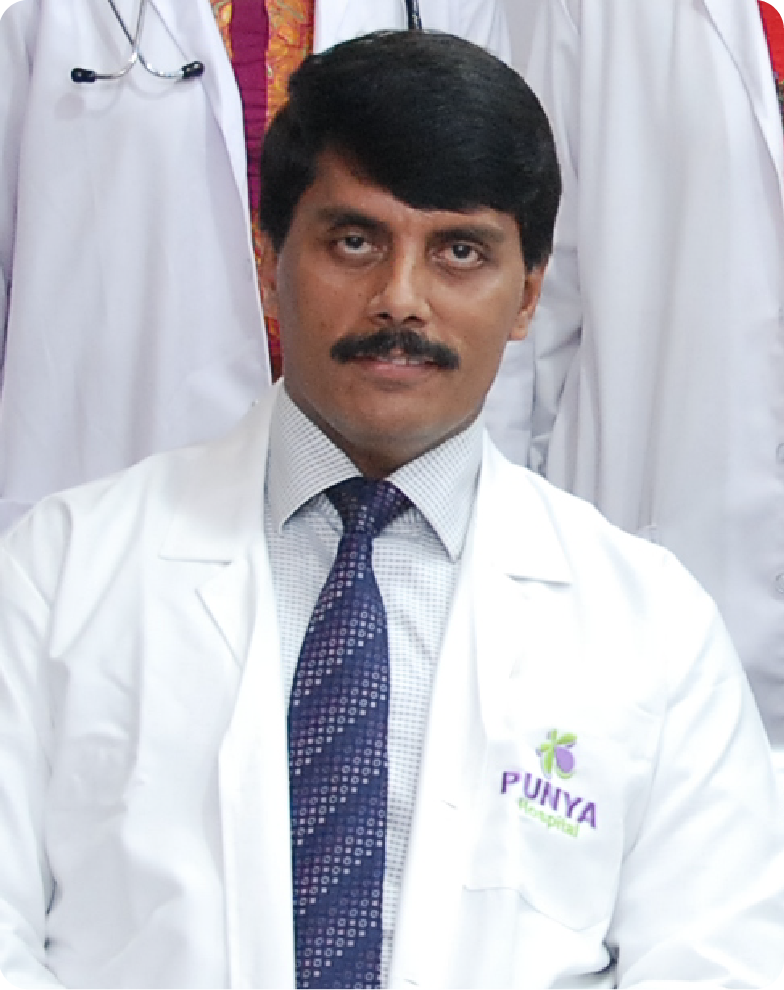Lap Hydatid Disease Surgery
Lap Hydatid Disease Surgery
Hydatid disease is caused by the infection of the dog tapeworm echinococcus granulosus in its larva stage. This happens as a result of accidental ingestion of the excreted tapeworm eggs in the facets of dogs that are infected. The tapeworm echinococcus granulosus is about 5 mm in size and it grows in the gut of animals like dogs, foxes etc. Eggs of these worms are excreted with the stool and cause infection in intermediate hosts like sheep, goats, camels, pigs etc. These eggs are hatched while they are inside the body of the intermediate host and they invade the intestinal walls and are carried to important organs like liver, lungs, brain etc. causing the formation of hydatid cysts in these animals. These herbivores when eaten by carnivores, new tapeworm develops in about six week’s time in them and the cycle repeats. Humans get infected by handling the infected dogs and mostly the infection occurs in children. The infection results in the formation of cysts and they remain unnoticed for several years. The incubation period for the discovery of the symptoms of hydatid disease can be up to fifty years and during this period the disease remains unnoticed. If the fluid from the cyst comes in contact with the patient’s immune system, it can result in life threatening anaphylaxis.
Diagnosis
No single diagnostic tests or imaging methods can be depended upon for diagnostic purposes. Combinations of serological, molecular and clinical techniques are usually needed of for this purpose. Serological diagnosis will be difficult from the samples of the eye and brain fluids. Abdominal cysts are usually diagnosed by ultra sound scanning. Cysts in the lungs are diagnosed by CT or CXR scan.
Treatment options
The hydatid disease is treated mainly by surgical removal of the cyst. This procedure is usually supplemented by chemotherapy. Chemotherapy is a supplementary method of treatment which can be applied to patients who are inoperable and suffer with lung and liver cysts. Puncture, aspiration, injection, re-aspiration (PAIR) is an effective treatment option which is very safe also. Conventional surgical procedure is most suitable when the cysts are larger with a number of daughter cysts, or when superficially located cysts or cysts are communicating to biliary trees or which are pressing on the nearby structures. Radical surgery is performed for total resection and partial resection of the affected organ is also possible in cases where it will be enough to reduce the symptoms.
Open surgical procedure is not suitable in cases like vena cava thrombosis, hyperbilirubinanemia, portal vein thrombosis etc. Minimally invasive procedure also known as laparoscopic procedures under ultra sonic or CT guidance are made use of for the following purposes like stenting, dilation, drainage etc.
Laparoscopic procedure
The patient is asked to lie in supine positions with legs split apart and the surgeon stand between the legs with his assistants standing at the sides. 4 to 6 trocars will be used, the camera trocar being placed above the umbilicus. In this procedure two surgeons work simultaneously and this is known as four-hand laparoscopic approach. This approach considerably reduces the time needed for completing the surgical procedure and reduces the risk of hemorrhage.
Peculiarities of laparoscopic procedure
- As this is a minimally invasive procedure, the pain and bleeding associated with this procedure will be less.
- The recovery and return to normal activities of life are faster in this surgery as the healing of the wound will be easier and faster.
- Patients with high blood pressure, diabetics and obesity are not suitable for laparoscopic procedures.
- If the patient have already undergone a surgical procedure in the target area.
OUR TEAM

Dr. Nagaraj B Puttaswamy
Senior Consultant - Laparoscopic Surgeon Bariatric Surgeon and Surgical Gastroenterologist


